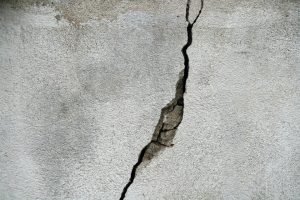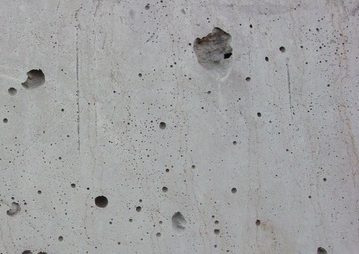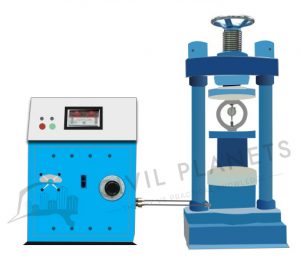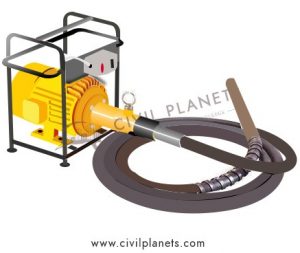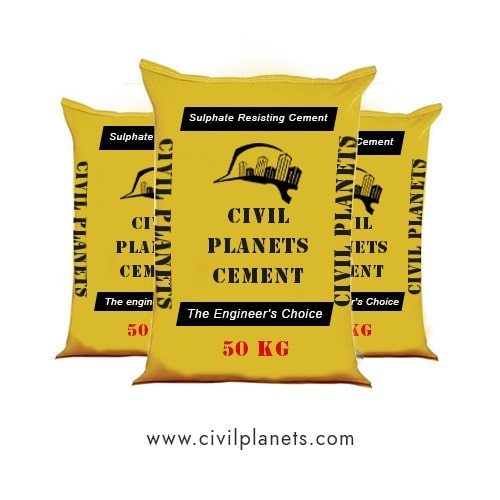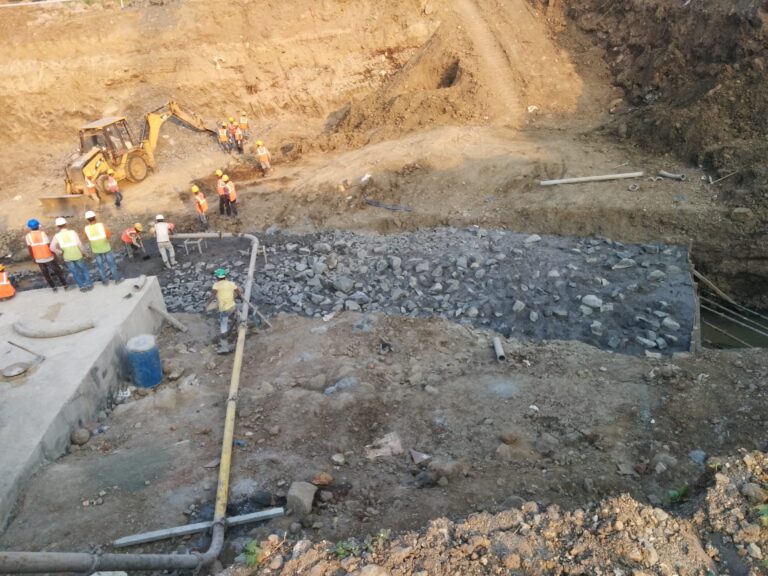The concrete is a macro content that is made by blending cement, sand & coarse aggregate with water. The strength of the structure depends on the properties of the concrete we use.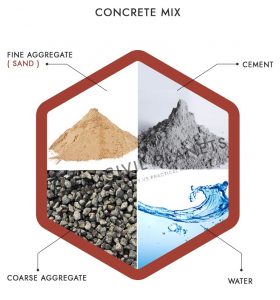
In general, the concrete that we made at site or in RMC is suitable for general construction purposes on typical locality and environmental conditions.
If we need to build special structures such as power plants, offshore buildings, docks, aerodromes, we need special concrete that has a distinct set of properties.
Each of these special structures are needed to survive under aggressive conditions such as sulphate attack, chemical attack, acid attacks, chloride attacks, and other surface characteristics.
Like types of cement, there are some types of special concrete.
What is Special Concrete?
The concrete which is made unique to withstand any specific aggressive condition or situation is known as special concrete. This will be attained by either changing the core ingredients or by the manufacturing process or by the combination of both.
The mix ratio will differ from the ordinary concrete and will have unique ingredients to withstand the aggressiveness that it is intended to.
Types of Special Concrete
- Ferrocement Concrete
- Fibre Reinforced Concrete
-
-
-
-
- Steel Fibre Reinforced Concrete
- Glass Fibre Reinforced Concrete
-
-
-
-
- Polymer Impregnated Concrete
-
-
-
-
- Polymer Cement Concrete
- Polymer Concrete
-
-
-
-
- Superplastized Concrete
- Ultra-High Strength Concrete
- Sulphur Impregnated Concrete
- Self-compacting Concrete
Let’s discuss each in detail
Ferrocement Concrete
This concrete is a crack fighter.
The ferrocement concrete is used where high performance and lightweight concrete is required to fight against the crack.
- The recommended mix ratio of cement & sand varies between 1:2 to 1:3.
- The water-cement ratio is 0.35 to 0.6. But minimum 0.4 is recommended to reduce the permeability of the concrete.
- The skeleton steel or wire mesh reinforcement will be used in concrete to produce strength & mortar mass.
- The admixture may be added to increase the workability of concrete and to reduce the water content.
- This concrete has an excellent impermeability compared to the ordinary concrete & it is used in the precast structure.
Fibre Reinforced Concrete
This concrete is a shrinkage fighter.
- The shrinkage crack appears on concrete even if the load does not act on the structure. So a small quantity of fibre is added in the concrete to increase the flexural strength & tensile strength to avoid the shrinkage.
- The main factors affecting the fibre concrete strength is the water-cement ratio, size of the fibre, the volume of the aggregates & improper mix ratio.
- The high amount of fibre will affect the workability of concrete.
There are 2 types of fibre reinforced concrete in use.
- Steel fibre reinforced concrete
- Glass fibre reinforced concrete
Steel fibre reinforced concrete
The steel bars are cut into a small length and mixed with other ingredients at a specific ratio to produce steel fibre reinforced concrete.
- The diameter of the steel bar is in the range between 0.25mm to 0.75mm based on the concrete mass
- The concrete flexural strength & resistance capacity against the expansion increased 2 to 3 times when 2 to 3% of the steel fibre is added.
- The steel fibre added in concrete will affect the concrete workability and uniformity.
Generally, the steel reinforcement concrete is used in the construction of bridge decks & tunnel lining, etc.,
Glass Fibre Reinforced Concrete
A 10% of glass fibre mixed with the concrete increases the concrete flexural strength & resistance capacity against the crack on the concrete surface. It is known as glass fibre reinforced concrete.
The glass fibres are cut into small pieces and mixed with other materials in concrete to produce glass fibre reinforced concrete. The GFR concrete is mainly used in the construction of swimming pools, water tanks, etc.
Polymer Impregnated Concrete
This concrete is a void fighter.
- The standard concrete will reduce in strength & durability due to the crack presence on the concrete
- The ordinary concrete element polymerised by the monomer to fill the voids and to increase its strength is called Polymer Impregnated Concrete.
- After the ordinary concrete hardens, the air voids are vacuumed, and the monomer will be penetrated through voids to make the concrete strong in durability & strength.
- The styrene, vinyl chloride & methyl methacrylate are the monomers used in concrete polymerisation.
The PIC is mainly used in precast structure construction, road & marine structure.
Polymer Cement Concrete
The polymer cement concrete is used in marine-related construction works.
- The monomers will be mixed with the usual concrete ingredients at specific ratios to increase the concrete strength, chemical & impact resistance.
- The polymer is mixed in concrete at the ratio of 10 to 25% to the weight of cement.
- The monomer will be polymerised after the completion of concrete moulding work.
Polymer Concrete
Generally, in ordinary concrete, the cement acts as a binding material, the sand acts as a filler material & coarse aggregates will implement the strength of the concrete.
In polymer concrete, cement will not be added as a binding material.
Instead of cement, the polymer will be mixed with the aggregates to make bondage between the ingredients. After placing the concrete, it was polymerised either at a normal temperature or high temperature.
Superplastized concrete
This special concrete is a workability booster.
The superplasticiser added with the concrete at 0.7% to increase the workability & strength of the concrete 
The super plasticised concrete is used in construction for the below-mentioned situations.
- Higher-strength required with less quantity of cement in concrete.
- Higher-strength required with a low water-cement ratio.
- The concrete element required with excellent flexibility without bleeding & segregation.
Ultra-High Strength Concrete
This special concrete is a strength booster.
- The compressive strength of ordinary concrete lies in the range of 10 N/Sqmm to 30 N/Sqmm. But this type of special concrete has a compressive strength in the range of 80 N/sqmm to
- High cement mortar ratio & high quality of the material will be used in concrete to develop the concrete strength in the higher range.
The following different methodology is used to increase the strength of the concrete.
- Admixtures
- Re-vibration of concrete
- Seeding of Portland cement in fresh concrete
- Crack prevention in concrete by injecting chemicals in concrete surfaces.
The ultra high strength concrete is used in the construction of high rise structure & precast products.
Sulphur Impregnated Concrete
This special concrete is an Acid Resistor.
- This concrete does not contain any water or cement. The liquefied sulphur will be mixed with the fine
- The sulphur impregnated concrete mostly used in the construction of industrial plant & tunnel lining works.
- It has excellent resistance capacity against the acid action.
Moreover, the durability & strength of the SIC concrete is very high. The sulphur impregnated concrete attains the higher strength in early compared to other ordinary concrete.
Self Compacting Concrete
- The self-compacting concrete is used where the reinforcement layers are very congested and not
- The SSC concrete will settle properly without bleeding & segregation in the formwork without any external force of compaction.
- The workability of concrete is very high, and the admixture will be used to reduce the water content for cracks happening by air voids.
- The aggregate sizes are not more than 20mm which does not affect the workability of concrete.
Advantages Of Special Concrete
- It extends the life of the structure by fighting an aggressive situation.
- Both compressive and tensile strength of concrete is high.
- It produces high strength, so the possibility of structural failure is very less.
Difference between Ordinary and Special Concrete
| Ordinary Concrete | Special Concrete |
| Economical | Expensive |
| Strength & durability is low. | Strength & durability is very high under aggressive conditions. |
| The formal method used to produce the special concrete. | A High technique used. |
| Mostly natural resources are used to make the concrete. | Some special admixtures & other materials are used to make the concrete. |
| It is used in typical construction works. | It is used in the construction of nuclear plants, power plants & radiation protection structures. |
| The water cement ratio ranges from 0.4 to 0.55 | The water cement ratio is less using of admixture & superplasticizer. |
Happy Learning 🙂

